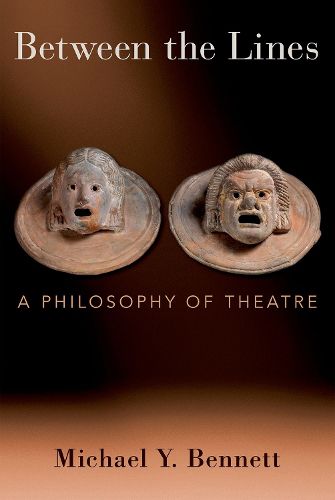Readings Newsletter
Become a Readings Member to make your shopping experience even easier.
Sign in or sign up for free!
You’re not far away from qualifying for FREE standard shipping within Australia
You’ve qualified for FREE standard shipping within Australia
The cart is loading…






In Between the Lines: A Philosophy of Theatre, theatre theorist, Michael Y. Bennett offers a systematic account of theatre--thinking about theatre metaphysically, epistemologically, and ethically. To investigate theatre and its in-between spaces, Bennett introduces some basic ideas about coherence and correspondence and, much more prominently, conversations surrounding subsumption and distinctness in order to better describe theatre as a form of art. Instead of limiting the concept and use of subsumption to suggest that constituent parts are subsumed within a distinct whole, Bennett broadens the concept to claim that many of the properties of a theatrical character and/or a theatrical world are subsumed within the text.
Unlike some forms of literary fiction in which a narrator describes the properties of characters in general terms, theatre (particularly for the theatregoer) is largely devoid of distinct properties attributed to theatrical characters. Outside of the fact that theatrical characters speak and perform actions during the time of the play, there are little-to-no specified properties regarding theatrical characters and/or theatrical worlds. In thinking about the conceptual empty spaces of theatre, Bennett investigates three main topics: theatre as an art form, the properties of theatrical characters and theatrical worlds, and the difference between truth and truthfulness in the theatre.
$9.00 standard shipping within Australia
FREE standard shipping within Australia for orders over $100.00
Express & International shipping calculated at checkout
In Between the Lines: A Philosophy of Theatre, theatre theorist, Michael Y. Bennett offers a systematic account of theatre--thinking about theatre metaphysically, epistemologically, and ethically. To investigate theatre and its in-between spaces, Bennett introduces some basic ideas about coherence and correspondence and, much more prominently, conversations surrounding subsumption and distinctness in order to better describe theatre as a form of art. Instead of limiting the concept and use of subsumption to suggest that constituent parts are subsumed within a distinct whole, Bennett broadens the concept to claim that many of the properties of a theatrical character and/or a theatrical world are subsumed within the text.
Unlike some forms of literary fiction in which a narrator describes the properties of characters in general terms, theatre (particularly for the theatregoer) is largely devoid of distinct properties attributed to theatrical characters. Outside of the fact that theatrical characters speak and perform actions during the time of the play, there are little-to-no specified properties regarding theatrical characters and/or theatrical worlds. In thinking about the conceptual empty spaces of theatre, Bennett investigates three main topics: theatre as an art form, the properties of theatrical characters and theatrical worlds, and the difference between truth and truthfulness in the theatre.